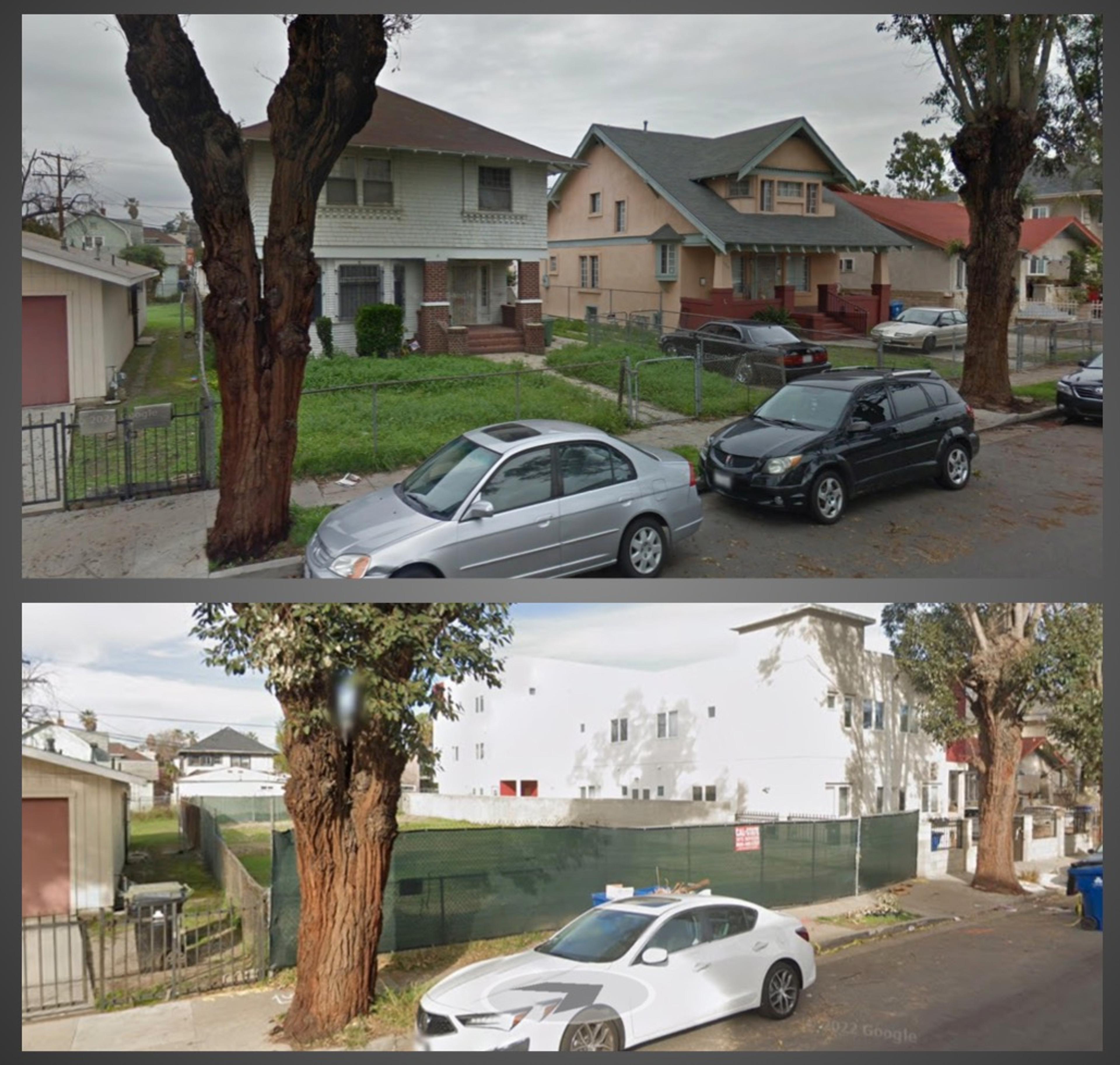There was a lot of reaction to the Tripalink post yesterday. Some people expressed “how can there be more of...THIS?!” Well there are lots more, just some of which I'll attach at the end of this post.
Some others asked “is this a Chinese company?” Yes and no. No, they do not have their headquarters in China, nor were they bankrolled by a Chinese company. Rather, we are in that middle ground where Chinese nationals build for Chinese nationals, and therefrom come some issues. (The United States, and Los Angeles especially, has a complex relationship with the PRC; for example, Gehry’s The Grand on Bunker Hill had a $300million influx of cash from the CCP, and I won’t even go into the whole business with Chinese real estate ventures—Park Hyatt, Shenzhen Tower, etc.—involving Jose Huizar, millions in bribes, and all those racketeering charges.)
Tripalink has been called out for breaking housing discrimination laws, in that their units were marketed exclusively to Chinese nationals, advertising only on the Chinese social media platform WeChat. After some strong words from HUD, they have recently broadened their customer base, by advertising in English.
You may wonder, what’s it like inside a Tripalink? Let’s (using the promotional images from Tripalinks own website) go and visit one now!
Here’s Li Jing, Mei Lien, and Caihong:
“We shall not speak to Caihong. She does not believe strongly in co-living, and has cluttered this apartment with too many of her personal belongings.”
Mei Lien retreats to the solace of the bathroom. “Why am I here? What am I doing? What does it all mean?” she wonders. She takes a deep breath. “No. I am correct. They shall all become part of Tripalink.”
Meanwhile, with her two roommates still in Community Area, Caihong retreats to her cluttered room among all her belongings.
"I have dishonored Tripalink," she sighs.
Anyway, I would advise you read these letters. They give you a sense of the frustration felt by long-term residents. There was even a protest march against Tripalink.
But wait, you say, weren’t you going to talk about some other outfit called Orion Housing? Ohhhh yeahhhh I was (and about whom I talked a bit here). Are they worse than Tripalink? I’d say no, in that once in a while, after they tear down something good, they hire an actual architect to erect a bland box exactly 34% less terrible than one of Tripalink’s. Moreover, Orion doesn’t have the numbers…yet.
Strictly speaking their name is Orion Capital, run by a fellow named Henry Fan, and if my suspicions prove correct, they are going to lay waste to this city in Tripalinky numbers soon enough. This project at the corner of Dewey & 11th took out SIX wonderful vintage homes, now that’s chutzpah.
More recent work by Orion—
1073 West Exposition:
1164 W 37th Pl:
1176 W 37th Pl:
1189 West 37th Pl:
2684 Orchard:
4000 Mont Clair:
5536 Lexington Ave:
Oh, and as promised, MORE BY TRIPALINK!
1344 West 37th Pl:
1458 West 37th St:
1534 West 35th St:
1575 West 35th Pl:
1607 West 35th St:
1637 West 37th Pl:
1654 West 35th St:
1712 West Jefferson:
1729 West Adams:
2580 Sepulveda:
3100 So. Normandie:
Ok, that's it for now. Tune in tomorrow when I promise I'll move on from these!
About Nathan Marsak
NATHAN MARSAK says: “I came to praise Los Angeles, not to bury her. And yet developers, City Hall and social reformers work in concert to effect wholesale demolition, removing the human scale of my town, tossing its charm into a landfill. The least I can do is memorialize in real time those places worth noting, as they slide inexorably into memory. In college I studied under Banham. I learned to love Los Angeles via Reyner’s teachings (and came to abjure Mike Davis and his lurid, fanciful, laughably-researched assertions). In grad school I focused on visionary urbanism and technological utopianism—so while some may find the premise of preserving communities so much ill-considered reactionary twaddle, at least I have a background in the other side. Anyway, I moved to Los Angeles, and began to document. I drove about shooting neon signs. I put endless miles across the Plains of Id on the old Packard as part of the 1947project; when Kim Cooper blogged about some bad lunch meat in Compton, I drove down to there to check on the scene of the crime (never via freeway—you can’t really learn Los Angeles unless you study her from the surface streets). But in short order one landmark after another disappeared. Few demolitions are as contentious or high profile as the Ambassador or Parker Center; rather, it is all the little houses and commercial buildings the social engineers are desperate to destroy in the name of the Greater Good. The fabric of our city is woven together by communities and neighborhoods who no longer have a say in their zoning or planning so it’s important to shine a light on these vanishing treasures, now, before the remarkable character of our city is wiped away like a stain from a countertop. (But Nathan, you say, it’s just this one house—no, it isn’t. Principiis obsta, finem respice.) And who knows, one might even be saved. Excelsior!””
Nathan’s blogs are: Bunker Hill Los Angeles, RIP Los Angeles & On Bunker Hill.
